Pectoral Sandpiper (Calidris melanotos) by Larry Jordan (click on photos for full sized images)
Well it’s not unheard of but pretty rare to see Pectoral Sandpipers in Shasta County. You see the Pectoral Sandpiper is a medium-sized sandpiper that breeds on wet tundra in both the North American and Siberian Arctic and winters mostly in southern South America1. I know range maps basically show the “average” or “normal” range of species but notice that this map shows pretty much nothing west of the Rockies in the U.S.
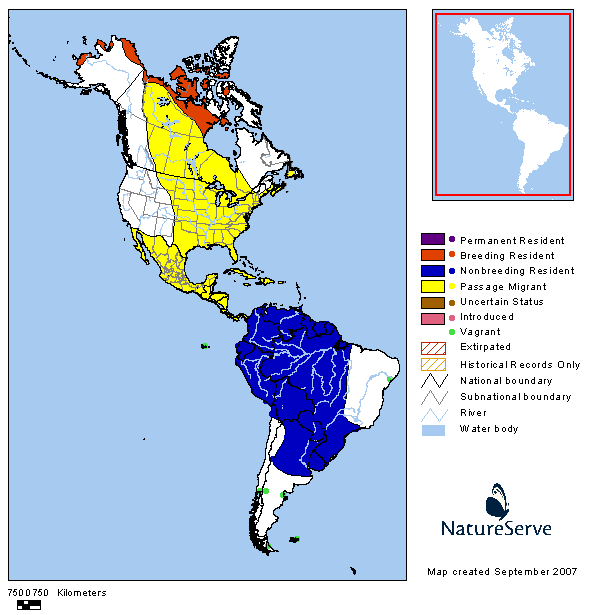
You would probably also notice that this looks like it would be a long migration from breeding grounds to wintering habitat for this bird and you would be correct. The Pectoral Sandpiper travels over 18,000 miles from its breeding grounds to its wintering habitat and back. A distance similar to that flown by the Arctic Tern.
According to the local listserv, Shasta Birders, there were six of these beauties seen in a horse pasture across from Lone Tree Pond, a local known birding spot. You can find a local listserv at the American Birding Association website here.
Since this would be a life bird for me, I decided I should check it out. I found five.
During migration Pectoral Sandpipers usually feed along edges of ponds or on algal mats away from the water’s edge, among vegetation. They are often found with other shorebirds like these much smaller Least Sandpipers (Calidris minutilla)…
or these much larger Long-billed Dowitchers (Limnodromus scolopaceus).
As a bonus, there were several Wilson’s Snipe (Gallinago delicata) playing hide and seek in the vegetation along the edges of the pasture.
Here is a video I shot with the Pectoral Sandpipers and Least Sandpipers foraging together.
To see more great bird photos from around the world, check out The Bird D’pot and Wild Bird Wednesday!
References:1Birds of North America Online

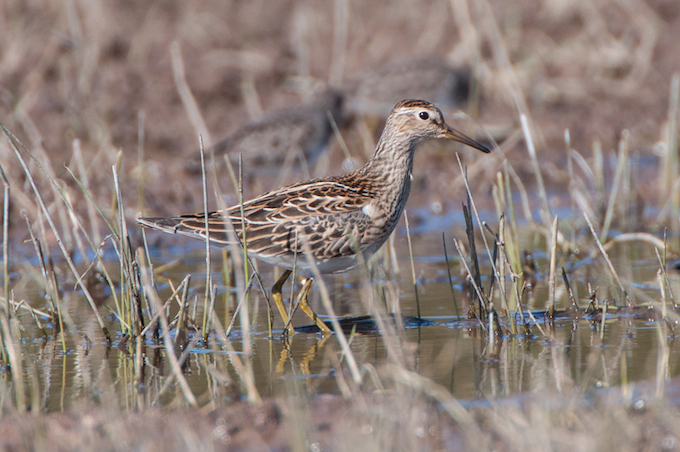
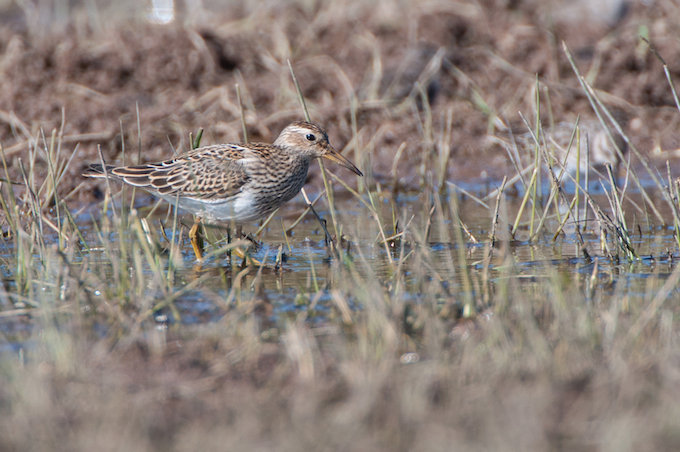
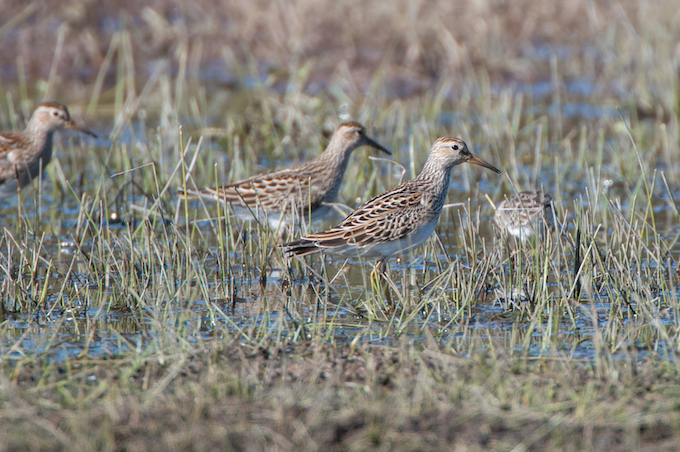
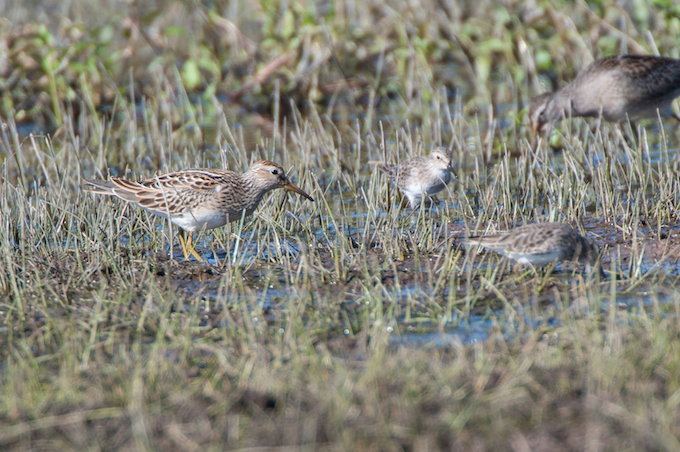
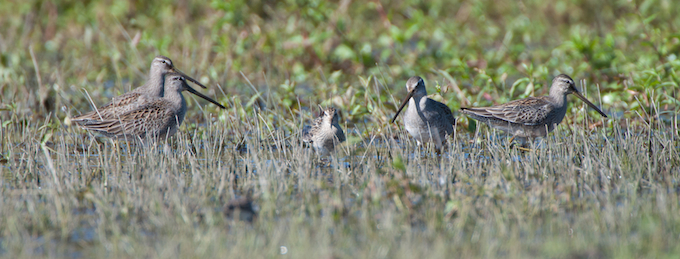
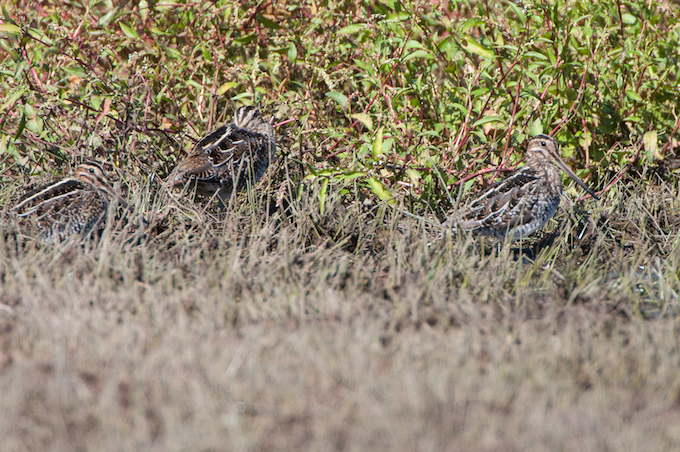








Comments on this entry are closed.
Would you consider these vagrants? They’re beautiful and I’m glad to got to spot them.
A wonderful post Larry… you have some wonderful waders on your patch.
aren’t they amazing the distance they’ll migrate Larry?! Your photos and commentary are fabulous; well done. I did get to see a Pectoral Sandpipier at great distance recently, that fortunately was recognised by well-learned birders in the group. It was remarked upon how lucky we were to see it, that they’re a rare bird to see…
Great photos of the Sandpipers – they are not shorebirds that we see down this way.
HI Larry Great post with wonderful information about this little wader. Great still photos adn marvelous video footage. I have never seen either bird so thanks for sharing.
Hi Larry, great post of an incredible wader. Like you I had the chance to get myself a lifer when two appeared about 80miles away in the county of Nottinghamshire…… A little distant, but good scope views
The Sandpipers are fabulous…but oh the snipes…that would be a bird on my list to spot and photograph!! Lucky you!!
Larry, great post! We get these during migration, but usually need a scope as they tend to forage at the rear of a field. Splendid photographs!
Went looking for these recently, didn’t find them. That’s okay though, spent a little time at this location and saw plenty of Soras and Virginia Rails (heard these mostly and caught quick glimpses, they’re extremely shy).
Also got a chance to see a Nutmeg Mannikin feasting on the seeds of tall grass next to the pond. This little spot has some great birds…
Thanks for the article Larry, got me out and about.
Larry, I love the information you always impart … leaving me that much more knowledgeable when I’m done with your posts. I wouldn’t have known the range of this sandpiper, and it’s amazing to see just how clear that line is across the Rockies. Before I got to the part about the snipe, I was thinking, I hope people don’t confuse them with snipe! Great contrast and comparison and very educational for me. This would be a life bird for me, and how cool that circumstances brought them out your way.